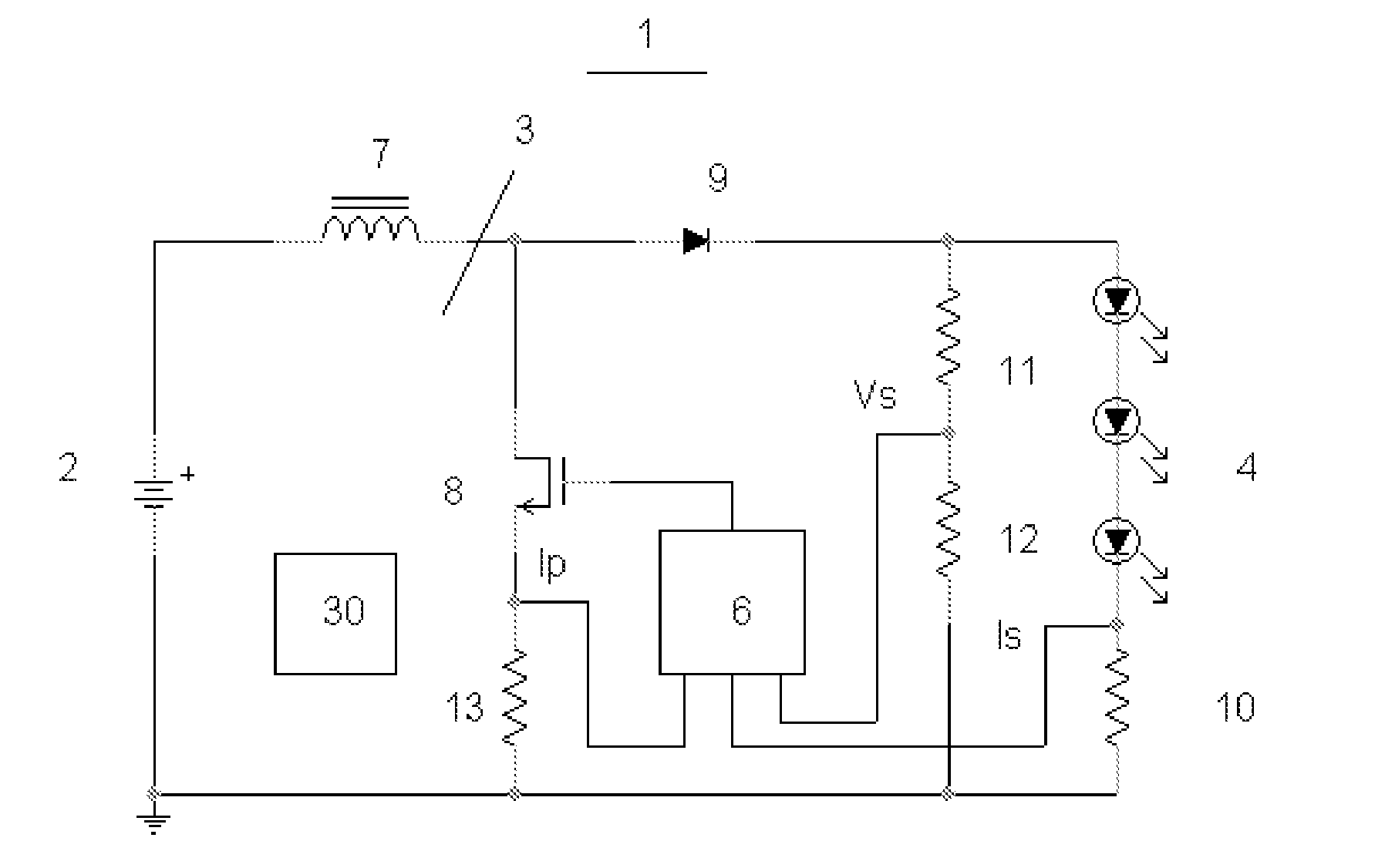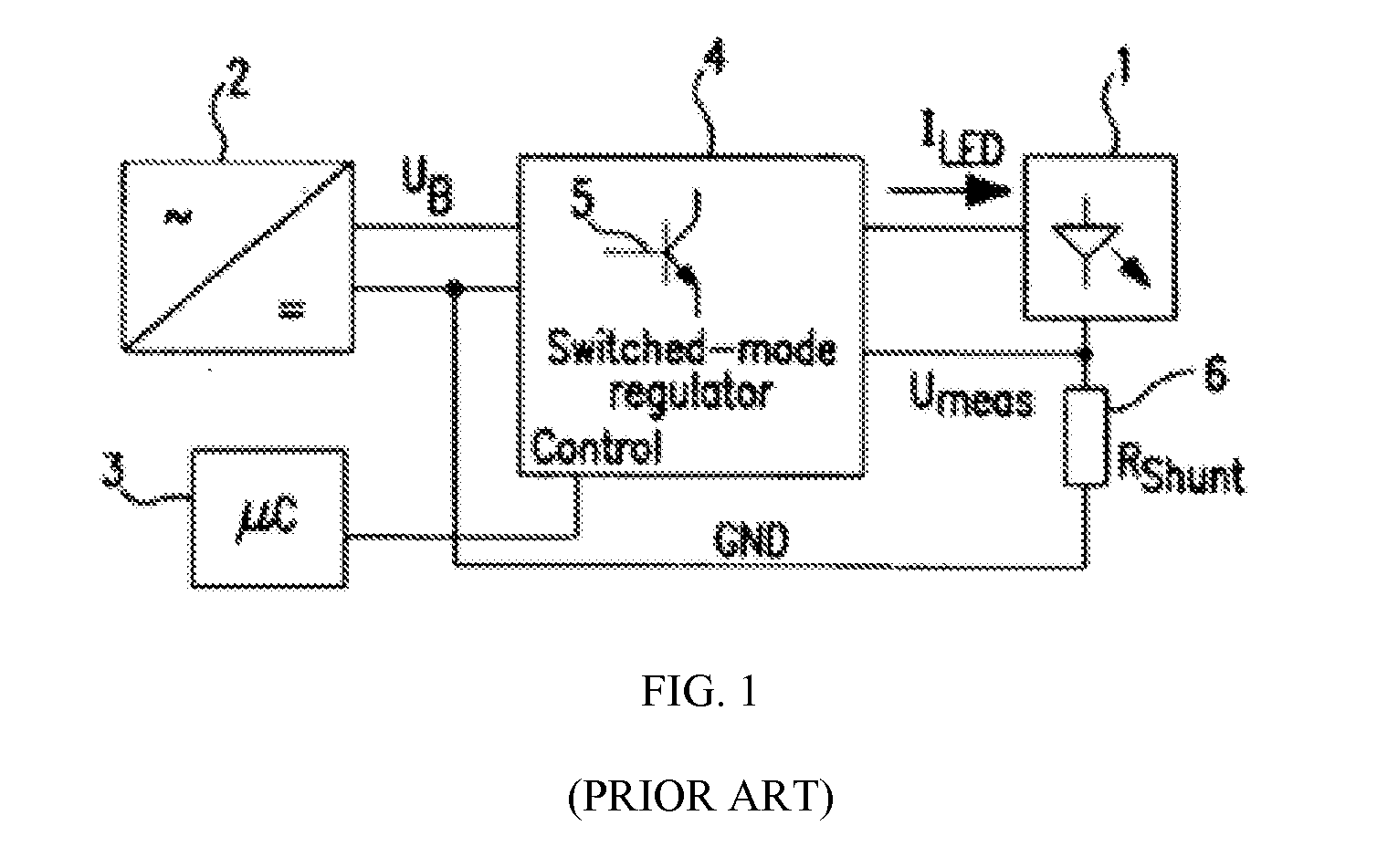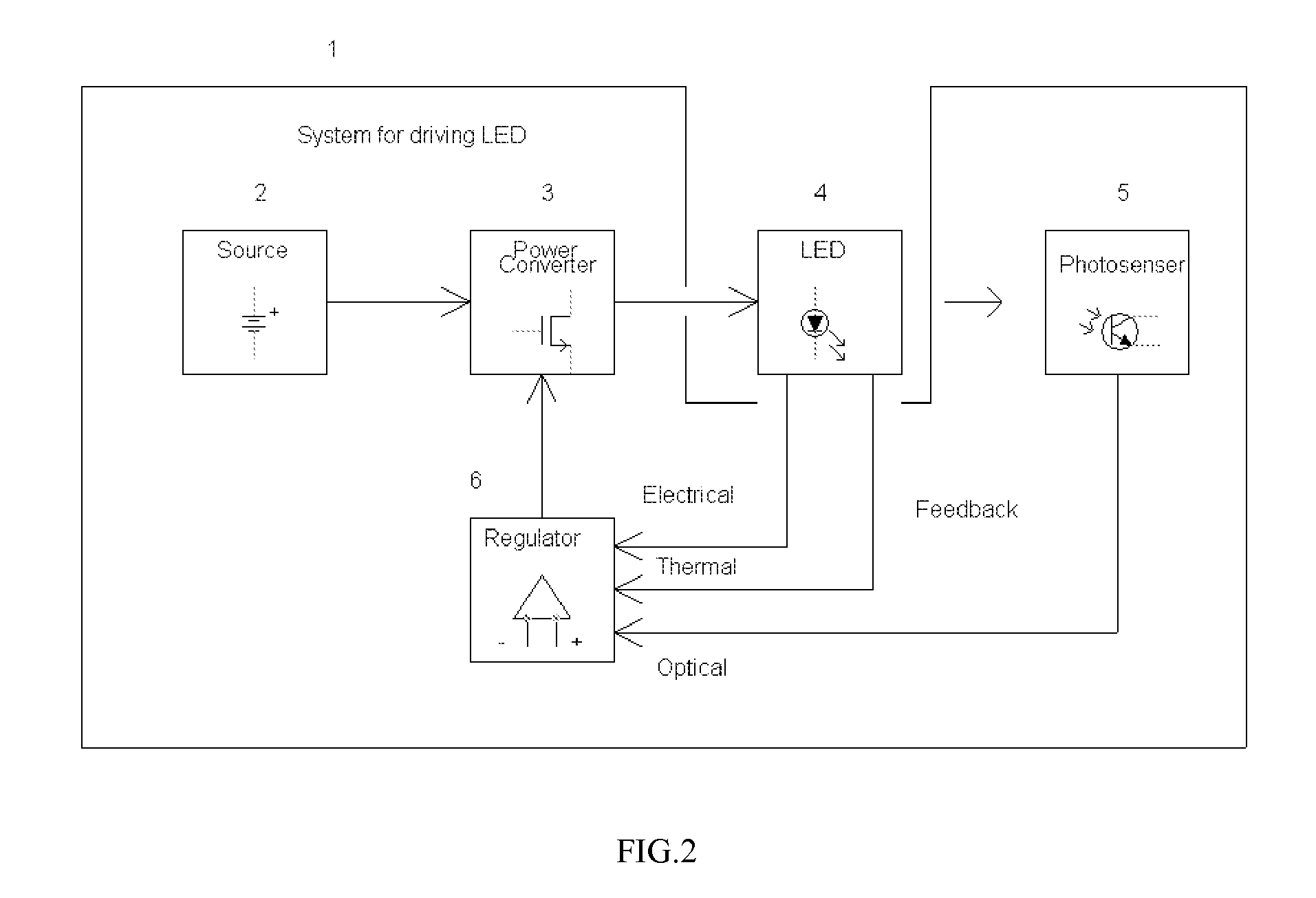System and Method for Driving LED
a driving led and system technology, applied in the field of power conversion, can solve the problems of preventing the voltage type regulator from acting, presenting a very difficult load for the voltage type regulator, and the characteristic of the diode type volt amp, so as to reduce the monetary cost, accurate estimate the output current, and maintain global stability
- Summary
- Abstract
- Description
- Claims
- Application Information
AI Technical Summary
Benefits of technology
Problems solved by technology
Method used
Image
Examples
Embodiment Construction
[0037] The embodiments of the present invention will be described below with reference to the accompanying drawings. Like reference numerals are used for like elements in the accompanying drawings.
[0038]FIG. 2 is a system for driving one or plurality of LEDs, according to one embodiment of the invention. The system 1 includes an energy source 2 and a switching power converter 3 driving a string of LEDs 4. The performance of LEDs is measured by electrical and thermal sensors (not shown separately from LED unit 4) and a photosensor 5. These sensors generate electrical, thermal and optical feedback channels coupled with a regulator 6 controlling the output of the power converter 3. The regulator 6, according to one embodiment of the invention, needs to have as minimum a single electrical feedback. Yet, it may use additional thermal and optical feedback channels for enhanced performance, according to another embodiment of the invention. The energy source 2 is an AC / DC converter, connec...
PUM
 Login to View More
Login to View More Abstract
Description
Claims
Application Information
 Login to View More
Login to View More - R&D
- Intellectual Property
- Life Sciences
- Materials
- Tech Scout
- Unparalleled Data Quality
- Higher Quality Content
- 60% Fewer Hallucinations
Browse by: Latest US Patents, China's latest patents, Technical Efficacy Thesaurus, Application Domain, Technology Topic, Popular Technical Reports.
© 2025 PatSnap. All rights reserved.Legal|Privacy policy|Modern Slavery Act Transparency Statement|Sitemap|About US| Contact US: help@patsnap.com



